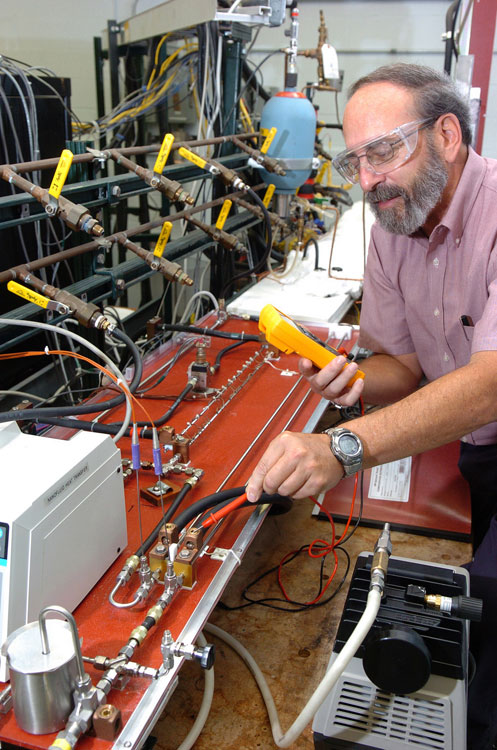Nanofluids
Nanofluids are fluids containing nanoparticles (nanometer-sized particles of metals, oxides, carbides, nitrides, or nanotubes). Nanofluids exhibit enhanced thermal properties, amongst them; higher thermal conductivity and heat transfer coefficients compared to the base fluid. Recent simulations of the cooling system of a large truck engine indicate that replacement of the conventional engine coolant (ethylene glycol-water mixture) by a nanofluid would provide considerable benefits by removing more heat from the engine. The nanofluid would reduce:
- Radiator size
- Pump size
- Temperatures
Hence, there is considerable interest in the use of nanofluids for any process that uses process heat that requires cooling, i.e., engines, heat treating, rubber manufacturing, etc. Processing time could be reduced using nanoparticles in water compared to using water to cool from processing temperatures.
 
Above: Wen Yu (left) and David France (right) measure the heat transfer of a nanofluid, a fluid containing nanoparticles in suspension.
Argonne researchers are working with industry to develop and test nanofluids. Argonne has used and has developed various characterization techniques, namely, laser scattering and small-angle X-ray scattering to measure nanoparticle size, shape and distribution. Facilities are in place where measurements are made of nanofluid thermal conductivity, heat transfer, and viscosity; and erosion of materials by nanofluids. Experimental results are compared to predictions of the various theories and used to develop more advanced theories. Read a recent review of nanofluid thermal properties (3.59MB).
September 2007
|


